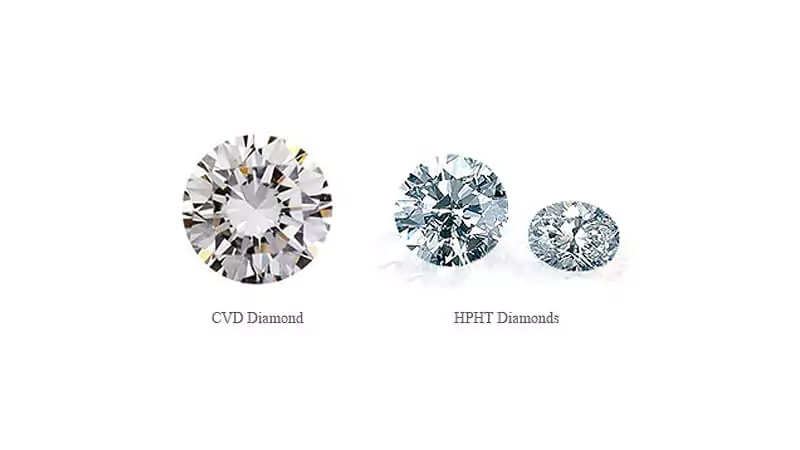Introduction
What are HPHT and CVD?
Diamonds traditionally form deep within the Earth’s mantle over millions of years under extreme pressure and temperature. HPHT and CVD methods replicate these conditions in controlled environments to produce synthetic diamonds efficiently.
Overview
Understanding Diamond Synthesis Methods
Synthetic diamonds are created either through HPHT or CVD processes hpht vs cvd, each involving distinct techniques and equipment to achieve crystallization.
HPHT vs CVD: A Comparative Analysis
HPHT Method
How HPHT Diamonds are Created
HPHT diamonds are synthesized by subjecting carbon to high pressure (5-6 GPa) and high temperature (about 1500°C) conditions akin to those found deep within the Earth. This environment encourages carbon atoms to form diamond crystals around a small seed diamond.
CVD Method
How CVD Diamonds are Created
Contrastingly, CVD diamonds grow from a hydrocarbon gas mixture in a vacuum chamber at moderate temperatures (700-1200°C). This process involves carbon atoms depositing layer by layer onto a substrate, forming a diamond crystal.
Color
Evaluating Color in HPHT and CVD Diamonds
Color is one of the most noticeable characteristics of diamonds and plays a significant role in their value and desirability. HPHT diamonds often retain natural colors, which can range from faint yellow to fancy colors like blue or pink, depending on the conditions during synthesis. In contrast, CVD diamonds can be engineered to exhibit specific colors through the introduction of trace elements during the growth process. This flexibility in color control makes CVD diamonds popular for applications where colored diamonds are preferred, such as in fancy jewelry pieces.
Factors Affecting Diamond Quality
Color
Evaluating Color in HPHT and CVD Diamonds
Color is a crucial quality determinant. HPHT diamonds often exhibit natural colors due to the synthesis process, while CVD diamonds can be produced in varying colors through intentional doping.
Clarity
Assessing Clarity Characteristics
Clarity refers to the presence of internal flaws or inclusions. Both HPHT and CVD diamonds can achieve high clarity grades, though the nature and type of inclusions may differ.
Cut
Importance of Cut in Diamond Quality
The cut of a diamond affects its brilliance and fire. Skilled cutting enhances the diamond’s appearance, regardless of whether it is HPHT or CVD.
Cost Differences Between HPHT and CVD
Market Trends
Current Market Trends in Synthetic Diamonds
The market prices of HPHT and CVD diamonds can vary significantly based on factors such as supply, demand, and perceived quality differences.
Practical Uses of HPHT and CVD Diamonds
Jewelry
Diamonds in Jewelry Manufacturing
Synthetic diamonds are increasingly used in jewelry, offering consumers more affordable options without compromising on brilliance or durability.
Industrial Uses
Diamonds in Industrial Applications
Beyond jewelry, synthetic diamonds find applications in industrial tools, electronics, and even medical equipment, where their hardness and thermal conductivity are prized.
Environmental Considerations
Sustainability
Eco-Friendly Aspects of Diamond Synthesis
Compared to mining, diamond synthesis reduces the environmental impact associated with traditional mining practices, though energy consumption remains a concern.
Future of HPHT and CVD Diamonds
Technological Advances
Emerging Technologies in Diamond Synthesis
Ongoing research aims to refine both HPHT and CVD processes, improving efficiency, quality, and environmental sustainability.
Conclusion
Recap and Final Thoughts
In conclusion, the debate between HPHT and CVD diamonds revolves around their synthesis methods, quality attributes, costs, applications, and environmental impacts. As technology advances, both methods continue to evolve, shaping the future landscape of diamond production and consumption.






More Stories
The Insider Story of Lab Grown Diamonds: Disclosing the Fate of Adornments
Ring Size Chart: A Comprehensive Guide for Perfect Fit
The Ultimate Guide: Lab-Grown Diamonds vs Authentic Diamonds